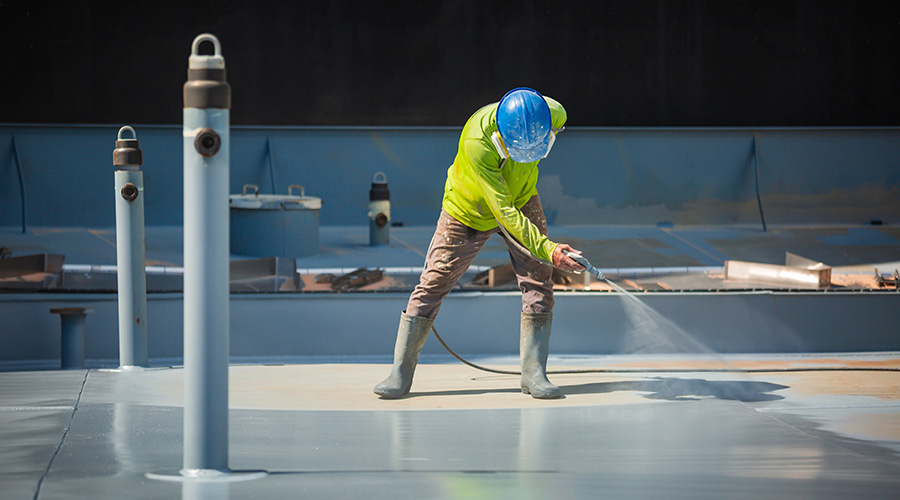SIDEBAR: Before and After Paints and Coatings Considerations
Part 5 of a five-part article on paints and coatings specification
Before: Surface Issues
Workers should not use shortcuts in preparing a surface for a paint or coating application. The surface to be covered must be dry and solid, and workers must wire brush, sandblast or sand it to remove rust, chipped paint and gloss.
If wood or wallboard substrate contains moisture, workers need to test it with a penknife. If it is solid but damp, they need to dry it thoroughly. If it is not solid, they need to find and fix the water intrusion and replace the substrate.
Eliminating the water source is critical for project success. This issue has ruined many paint applications. Situations involving exterior water intruding into interior walls can challenge workers because the leak source often can be far from its location inside the facility.
For example, on brick masonry, the solution to water intrusion might involve having an architectural engineering firm develop a scope of work and requesting bids for the work from restoration contractors. The engineering firm then supervises the work according to standard methods of field testing, grinding and repointing the masonry, and evaluating the repair.
The repair specified in the scope of work should follow a Brick Industry Association standard for grinding and pointing. Workers need to complete the exterior repair before starting the interior work to ensure the interior repair is both complete and sustainable.
After: Cleanup Considerations
Cleaning up paints and coatings goes more quickly if workers use drop cloths and masking tape to protect all surfaces not being painted. It also is much easier to clean up water-based paints and coatings than oil-based paints. Simply washing with water and soap will clean water-based paint from brushes, rollers and sprayers.
Soaking the brush in a thinner or turpentine will loosen oil-based paint or varnish, and alcohol cleans up shellac. Workers can do this by hanging tools in a container of the solvent if they need to use them again soon. After loosening the paint, they can comb it with a brush comb, swirl it in the solvent to loosen remaining paint, and wipe it with a clean cloth to get it ready for use.
When storing brushes and rollers for several hours or more to later continue the job with the same paint, workers can wrap the wet brush or roller in wax paper or foil to eliminate the need for cleanup. If they need to store tools for longer, they can soak the tools in thinner, comb and wash them with detergent to remove residual paint, rinse them, and leave them to dry before storage. Workers can clean tools that have hardened paint on them by soaking the tools in stripper or hot vinegar and cleaning them as described for water- or oil-based paints.
If a paint can is nearly empty, workers can dry the remainder by leaving it open and disposing of it with other waste. Recycling is a good option for disposing larger quantities of leftover paints and coatings. A paint or coating is acceptable for recycling if it has not frozen, has been sealed properly and stored upside down, and is less than 10 years old.
Related Topics:















